Frederick Roach was an American soul jazz Hammond B3 organist born in The Bronx, New York, United States. Roach made his record debut in 1960 with saxophonist Ike Quebec on the albums Heavy Soul and It Might as Well Be Spring and played with Willis Jackson. From 1962-64 he recorded 5 albums as a leader for the Blue Note Records label and also recorded with Donald Byrd on the album I'm Tryin' to Get Home. Roach's original writing, steady basslines, and highly musical fleet-fingered right hand set him apart. From 1966-67 he recorded three more albums as a leader for Prestige Records, which are in a more commercial vein than his Blue Note dates. He left the music business in 1970 and became involved in theater, playwriting and film. Reportedly, he moved to California to the film industry, where he suffered a heart attack and died in 1980.

Renaissance was a 1973 album by R&B group The Miracles on Motown Records' Tamla label, noted as the first-ever album by the group not to feature original lead singer Smokey Robinson on lead vocals. Instead, his replacement, new lead singer, Billy Griffin, did the lead chores on this album.

Lush Life is an album by jazz saxophonist Lou Donaldson recorded for the Blue Note label in 1967 and featuring Donaldson with Freddie Hubbard, Garnett Brown, Jerry Dodgion, Wayne Shorter, Pepper Adams, McCoy Tyner, Ron Carter, and Al Harewood performing arrangements by Duke Pearson. Due to the success of Donaldson's Alligator Bogaloo (1967) the album was not released until 1980 in Japan under the title Sweet Slumber and then finally released decades later internationally.

Midnight Creeper is an album by jazz saxophonist Lou Donaldson recorded for the Blue Note label in 1968 and featuring Donaldson with Blue Mitchell, Lonnie Smith, George Benson, and Leo Morris.
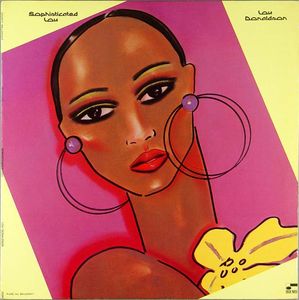
Sophisticated Lou is an album by jazz saxophonist Lou Donaldson recorded for the Blue Note label featuring Donaldson with Joe Farrell, Paul Winter, Joe Venuto, Derek Smith, Jay Berliner, Richard Davis, Ron Carter, Grady Tate, and Omar Clay with a string section arranged by Wade Marcus.

Easy Walker is an album by jazz saxophonist Stanley Turrentine recorded for the Blue Note label in 1966 and performed by Turrentine with McCoy Tyner, Bob Cranshaw and Mickey Roker. One additional track from an unreleased session arranged by Duke Pearson was added to the original CD release and another four bonus tracks recorded in 1969 and originally released on Ain't No Way were added to the 1997 CD reissue.

I'm Tryin' to Get Home is an album by American trumpeter Donald Byrd featuring performances by Byrd with a large brass section and vocalists recorded in 1964 and released on the Blue Note label in 1965 as BLP 4188.
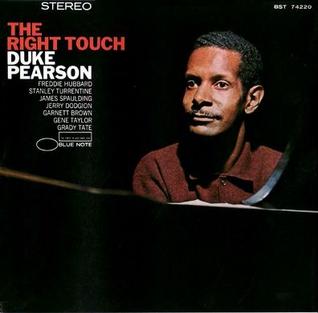
The Right Touch is the tenth album by American pianist and arranger Duke Pearson featuring performances recorded in 1967 and released on the Blue Note label in 1968.

True Blue is a jazz album by tenor saxophonist Tina Brooks recorded on June 25, 1960, and released on the Blue Note label. In the hard-bop idiom, it was Brooks' only performance as leader to be released during his lifetime, and features performances by Brooks, Freddie Hubbard, Duke Jordan, Sam Jones and Art Taylor.
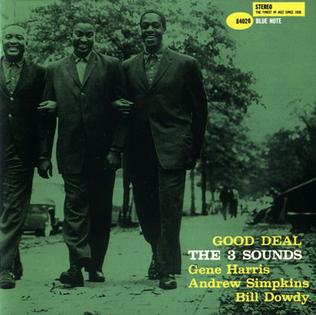
Good Deal is the third album by jazz group The Three Sounds featuring performances recorded in 1959 and released on the Blue Note label. Like the majority of the band's albums, it has been released on CD only in Japan, as a limited edition.

Moods is an album by jazz group The Three Sounds released in 1961 on the Blue Note label. It was recorded the same day Feelin' Good was recorded.

It Might as Well Be Spring is an album by American saxophonist Ike Quebec recorded in 1961 and released on the Blue Note label.
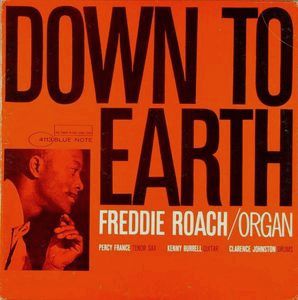
Down to Earth is the debut album by American organist Freddie Roach recorded in 1962 and released on the Blue Note label.

Mo' Greens Please is the second album by American organist Freddie Roach recorded in 1963 and released on the Blue Note label. It was reissued on CD only in Japan, as a limited edition.

Good Move! is the third album by American organist Freddie Roach recorded in 1963 and released on the Blue Note label.

Brown Sugar is the fourth album by American organist Freddie Roach recorded in 1964 and released on the Blue Note label.

Hootin' 'n Tootin' is the debut album by American saxophonist Fred Jackson, and the sole recording under his leadership, recorded in 1962 and released on the Blue Note label. The CD reissue added seven previously unissued bonus tracks from a later session.

Contours is the second album by American saxophonist Sam Rivers recorded in 1965 and released on the Blue Note label. The CD reissue contains an alternate take as a bonus track.
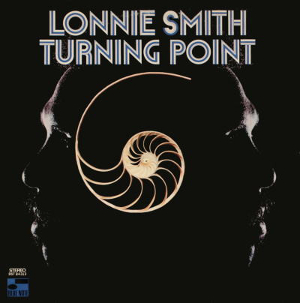
Turning Point is the second album by American organist Lonnie Smith recorded in 1969 and released on the Blue Note label.
Clarence Johnston —also credited as Clarence Johnson— is a jazz drummer. He was born in Boston.


















